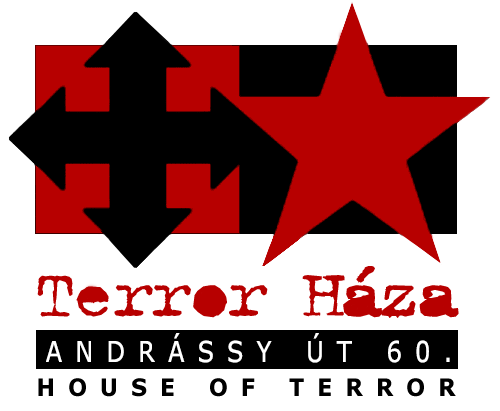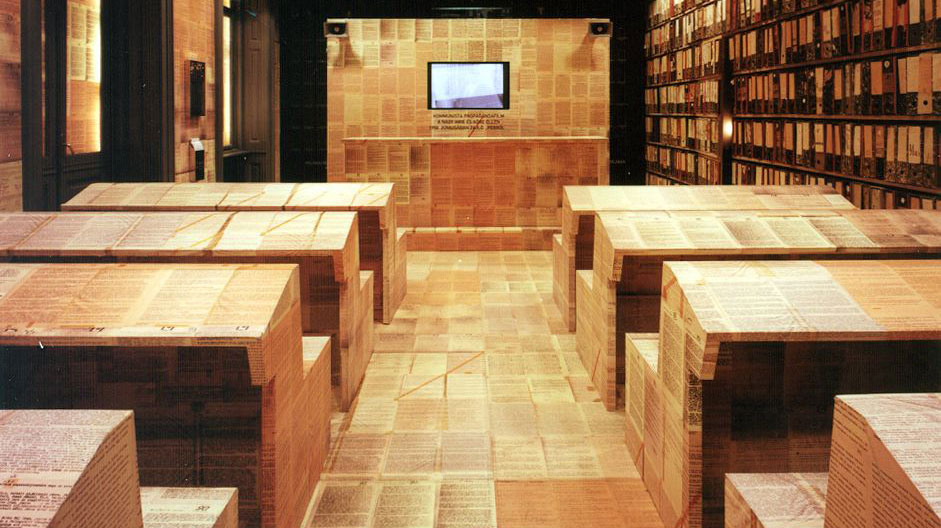We have recreated the erstwhile study of the ÁVH's chief on the basis of photographs and recollections. On the monitors surviving victims report on the interrogation methods of the ÁVH. The small screens show communists, who at first were the regime's leaders, later its prisoners and victims. Many of them were at first interrogators, then confessors, and subsequently joined the ranks of interrogators again.
“When he sees members of the ÁVÓ, every honest man is filled with a feeling of security and strength.”
Szabad Nép (Free People), the dictatorship’s daily newspaper, 1950
Gábor Péter was originally a tailor’s apprentice, but he eventually found his place in the Communist Party’s terror organisation, becoming the head of the political police, the ÁVH. The once all-powerful overlord of 60 Andrássy út, who complied with all the orders received from Mátyás Rákosi and the Soviet proconsuls, would eventually find himself in an underground cell there, imprisoned by his former comrades.
If so instructed, ÁVH staff would even participate in their own parents or siblings being arrested, tortured or beaten to death. Gábor Peter’s “empire” was the embodiment of hell. One day one could be an interrogator, and the next day one could be beaten unconscious – or to death – by one’s former colleagues. László Rajk was a minister of the interior, who was succeeded in that post by János Kádár. As such they were the immediate superiors of the commander of 60 Andrássy Avenue, and yet both were to be imprisoned themselves by the political police – Rajk in 1949 and Kádár in 1951. the regime’s paranoid nature is further illustrated by the fact that in 1953 Stalin’s anti-Semitism led to Gábor Péter – who had Jewish ancestry – being put behind bars, together with several of his colleagues.
After the 1956 Revolution and Freedom Fight, the hated ÁVH was once more renamed – this time as the Political Investigation Department. But in the post-1956 reprisals the new party leader, János Kádár, continued to rely on the “expertise” of former ÁVH officers.













